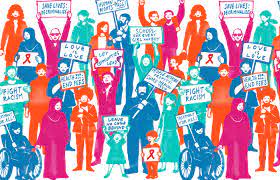UNAIDS Report: Progress & Challenges In HIV/AIDS Fight

A recent report titled “The Path That Ends AIDS” by the Joint United Nations Programme on HIV/AIDS (UNAIDS) sheds light on the progress made in combating reveals the ongoing challenges and progress in the global fight against Acquired Immunodeficiency Syndrome (AIDS) and human immunodeficiency virus (HIV).
- The report emphasizes the need for continued efforts to ensure access to treatment, address inequalities, combat stigma and discrimination, and secure adequate funding.
Highlights of the UNAIDS Report:
AIDS-Related Deaths and Access to Treatment:
- AIDS claimed a life every minute in 2022.
- Approximately 9.2 million people living with HIV worldwide lacked access to treatment in 2022.
- Out of the 2.1 million people receiving treatment, many were not virally suppressed.
Treatment Progress and Global Targets:
- 29.8 million out of 39 million people living with HIV globally are receiving life-saving treatment.
- Between 2020 and 2022, 1.6 million additional people received HIV treatment each year.
- The global target of 35 million people receiving HIV treatment by 2025 is within reach if the progress is sustained.
Slow Treatment Progress in Certain Regions:
- Eastern Europe, Central Asia, the Middle East, and North Africa exhibited slower treatment progress.
- Only around half of the over two million people living with HIV in these regions received antiretroviral therapy in 2022.
Gender Discrimination and Treatment Rates:
- Men living with HIV in sub-Saharan Africa, the Caribbean, Eastern Europe, and Central Asia are less likely to receive treatment compared to women.
- Gender discrimination needs to be addressed to ensure equal access to treatment.
Impact on Children:
- AIDS-related deaths among children reduced by 64% from 2010 to 2022.
- However, approximately 84,000 children lost their lives to HIV in 2022.
- Around 43% of the 1.5 million children living with HIV did not receive treatment in 2022.
Challenges in HIV Prevention:
- Women and girls accounted for 63% of all new HIV infections in sub-Saharan Africa.
- Only about 42% of districts with high HIV incidence in the region have dedicated prevention programs.
- Enhanced prevention efforts are needed to address this gap.
Funding Gaps:
- HIV incidence has declined in regions with increased prevention funding.
- Eastern Europe, Central Asia, the Middle East, and North Africa face challenges in their HIV epidemics due to a lack of funding.
- In 2022, only USD 20.8 billion was available for HIV programs in low- and middle-income countries, falling short of the USD 29.3 billion required by 2025.
Fluctuating Funding Levels:
- In the early 2010s, funding substantially increased, but it has since fallen back to 2013 levels.
- In 2022, there was a 2.6% drop in funding compared to the previous year, with only USD 20.8 billion available for HIV programs in low- and middle-income countries.
- The funding gap remains significant, as the required amount by 2025 is USD 29.3 billion.




